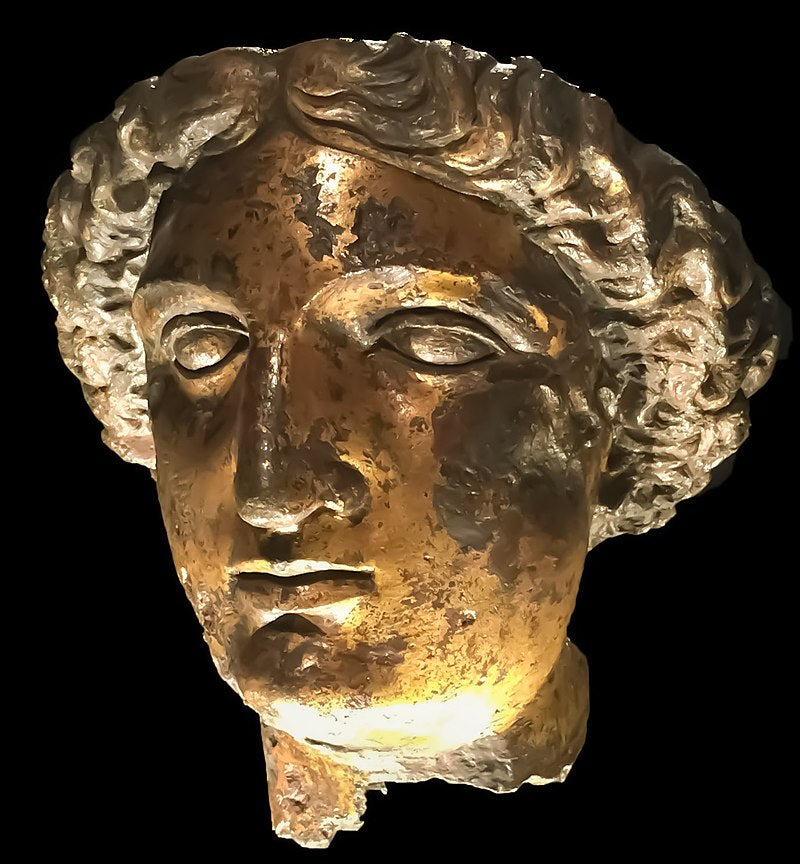In the heart of Roman Britain, nestled within the verdant landscapes of what is now Somerset, stands one of the most enigmatic and sacred sites of the ancient world—the Roman Baths of Aquae Sulis. Here, amidst the rising steam of natural thermal springs, pilgrims, warriors, and aristocrats alike once gathered to worship the powerful goddess Sulis Minerva. A unique fusion of Celtic tradition and Roman belief, Sulis Minerva represented wisdom, healing, and divine retribution. To step into the precinct of her sacred waters was to stand at the threshold of the mystical, where the mundane met the divine, and the veil between worlds grew thin.
The Convergence of Cultures: Sulis and Minerva
The name Sulis Minerva embodies the syncretic nature of Roman rule in Britain. Sulis, a native Celtic deity, was already revered by the Britons for her connection to the hot springs of Bath. She was a goddess of healing, prophecy, and protection, invoked for both blessings and vengeance. With the arrival of the Romans in the first century AD, the conquerors saw in Sulis an affinity with their own goddess Minerva, the patron of wisdom, strategy, and craftsmanship. Rather than erase local traditions, the Romans skillfully integrated them into their own pantheon, thus forging the hybrid goddess Sulis Minerva.
By adopting Sulis into their religious framework, the Romans facilitated a smoother cultural transition for the native Britons, allowing them to continue worshiping their sacred deity under a new, imperial guise. In return, the Romans endowed her cult with the grandeur of their architectural and religious traditions, erecting a magnificent temple complex beside the steaming springs that were believed to be infused with the goddess’s presence.
A Sanctuary of Healing: The Roman Baths
The Temple of Sulis Minerva stood at the heart of Aquae Sulis, today known as the city of Bath. The temple, a striking example of classical Roman architecture, was a place of reverence where devotees could leave offerings and seek the goddess’s favor. Adjacent to it lay the famous Great Bath, a vast, open-air pool filled with mineral-rich waters that naturally bubbled forth at a constant, soothing temperature of around 46°C (115°F).
Imagine yourself in ancient Aquae Sulis, the air thick with the scent of damp stone and sulfur as mist rises from the sacred waters. The sounds of murmured prayers and the gentle splash of the bathers echo against the grand colonnades. Priests clad in flowing robes conduct rituals, offering libations of wine and oil into the steaming depths. Wealthy visitors recline in the warm embrace of the baths, their bodies submerged in the goddess’s gift, believing that with each ripple and whisper of the waters, they draw in healing, wisdom, and protection.
Worship and Rituals: Communing with the Goddess
Worship at Sulis Minerva’s temple was a deeply immersive experience, suffused with the reverence and superstition characteristic of Roman religious practice. Pilgrims traveled from far and wide, seeking relief from ailments both physical and spiritual. Many left behind inscribed tablets, known as defixiones or curse tablets, on which they etched prayers or demands for justice. These thin sheets of lead or pewter were scratched with desperate pleas—often curses against those who had wronged them—and cast into the sacred spring, trusting Sulis Minerva to exact divine retribution.
A tablet might read:
“To the goddess Sulis Minerva, I give my stolen cloak. May she strike down the thief with fever and pain until it is returned.”
The waters bore witness to these whispered supplications, each inscription a testament to the unwavering faith of the worshipers. These relics, recovered in modern excavations, provide an intimate glimpse into the daily lives and personal grievances of Roman Britons, as well as the profound role Sulis Minerva played in their worldview.
Offerings of coins, jewelry, and finely crafted votive objects were also cast into the spring, gifts meant to invoke the goddess’s goodwill. The wealthier patrons of the baths might commission elaborately carved altars or statues in her honor, ensuring their devotion was both visible and enduring.
The Enduring Legacy of Sulis Minerva
With the decline of Roman Britain in the 4th century AD, the grand temples and bathhouses of Aquae Sulis fell into disrepair, their sacred waters gradually forgotten as Christianization swept the land. Yet the echoes of Sulis Minerva’s worship persist. The ruins of the Roman Baths stand as a testament to the spiritual and architectural brilliance of the past, drawing thousands of visitors each year who marvel at the site’s haunting beauty.
Even today, the waters of Bath retain an aura of mysticism, their warmth and mineral content still believed to hold therapeutic properties. The goddess Sulis Minerva may no longer receive prayers in the way she once did, but her presence lingers in the city’s name, its waters, and the countless artifacts that whisper of a time when gods and mortals communed in the misty embrace of the sacred springs.
A Goddess Reclaimed
Sulis Minerva remains one of the most compelling figures of Roman Britain’s religious landscape, embodying the delicate interplay between conquest and coexistence, tradition and transformation. Her worship at Aquae Sulis reveals much about the spiritual lives of the ancient Britons and Romans, illustrating the powerful role that sacred sites played in their societies.
To visit the Roman Baths today is to step into a world where history and myth intertwine. It is to feel the lingering presence of a goddess who once commanded devotion from an empire and whose waters still invite us to pause, reflect, and—perhaps—believe.
If this feels like your kind of history be sure to check out our cypress, lavender and spearmint candle inspired by Sulis Minerva here and transport yourself to the lush waters of the ancient Roman Baths.

